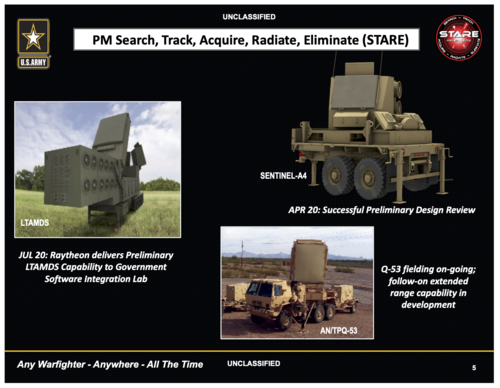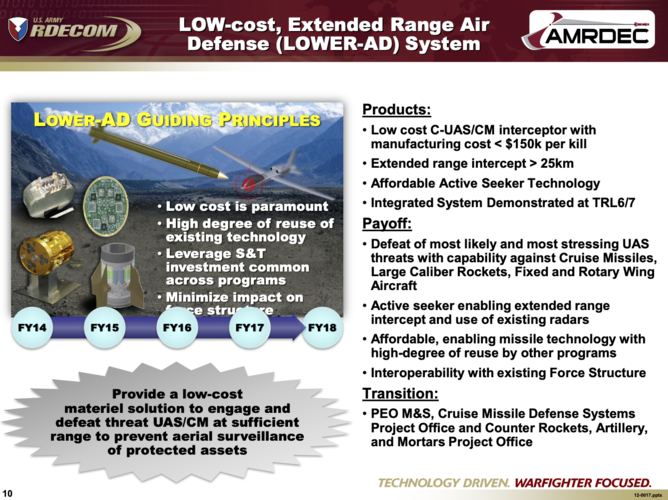Although Iron Dome is currently marked as an interim indirect fires protection capability solution, Pini Yungman, executive vice president and head of Rafael’s air-and-missile defense division, said the system is also in the running to become a permanent part of the Army’s portfolio.
The company will be participating in a demonstration at White Sands Missile Range, New Mexico, in 2021, he noted.
“We will know probably in the end of [2021], if Iron Dome will be … the next Army system to defeat UAVs and the rockets and short-range missiles, ballistic missiles, etc.,” he said. “I’m sure that after the demonstration, the Army will make a decision.”
Rafael and U.S.-headquartered Raytheon are also working on a U.S. version of the Tamir missile dubbed SkyHunter.
“We can say that SkyHunter [is] a name for the American Tamir with small adjustments, but we didn’t get detailed requirements,” Yungman said. “We know that it’s not a technical challenge, we know that it will not cause any damage to the performance.”
Sam Deneke, Raytheon’s vice president of business execution for land warfare and air defense, said the cost of each SkyHunter missile is likely to be similar to that of the Tamir and that the design has yet to be finalized.
“The elements of the missiles are very, very similar,” he said. “From a cost perspective, it likely will be very much in the same neighborhood of what the Tamir missile costs at this point.”
Rafael and Raytheon also plan on opening a facility to manufacture Iron Dome in the United States. Rafael already has offices opened in Washington, D.C., and the company plans to deliver interceptors, Yungman noted.
Within two years, subassemblies from Israel will be shipped to the new manufacturing facility in the United States, he said. “They will do the final integration. ... They will ship and deliver the interceptors.”
The new facility will be able to produce thousands of interceptors a year, although the Army has not set a requirement, he noted.
In Raytheon’s August announcement of the new facility, the firm said the partnership with Rafael is dubbed Raytheon RAFAEL Area Protection Systems and that the facility will produce both Iron Dome and the SkyHunter missile.
“It’s a highly collaborative relationship that we have with them,” Deneke said. “Raphael has a lot of technical expertise. Raytheon has been working with Raphael for many years, and so we have technical experts on our side as well.”
Deneke said the location of the U.S. Iron Dome facility is still yet to be determined. The August announcement said the companies hoped to choose a site by the end of 2020.
However, Deneke said the firms are “not holding ourselves to an end of the year announcement.”
There are some challenges facing Iron Dome moving forward.
One includes incorporating the system into the Army’s integrated air-and-missile defense battle command system, or IBCS, which helps network sensors together. In March, the service attempted to abandon its plans to purchase Iron Dome due to these potential complications, although it later walked back those decisions. Gen. John Murray, head of Army Futures Command, told the House Armed Services tactical air and land forces subcommittee that the service would be unable to connect the Israeli product into IBCS.
“We believe we cannot integrate them into our air defense system based on some interoperability challenges, some cyber challenges, and some other challenges,” he said in testimony. “What we ended up having really is two standalone batteries that will be very capable, but they cannot be integrated into our air defense system.”
Deneke said Raytheon is working on the challenge to ensure that Iron Dome can be integrated into IBCS.
“The Army has been very public in terms of the challenges and the architecture associated with IBCS and that integration,” he said. “Certainly we understand that and have done some work in that regard.”
Raytheon is confident in its ability because it has already demonstrated the system with the Marine Corps, he noted. The Congressional Research Service noted that the Marine Corps was able to integrate Iron Dome elements into its radar and command-and-control system in August 2019 during a live-fire event.
“According to a Marine official at the time, ‘The Marine Corps proved during a live-fire demonstration last month that it could integrate Marine Corps systems with other components to successfully counter emerging threats,’” CRS said in a 2020 report titled, “U.S. Army Short-Range Air Defense Force Structure and Selected Programs: Background and Issues for Congress.”
Yungman also expressed confidence in solving the challenge, noting that Rafael has already been working on meeting Army requirements.
“We conducted another test by the Army requirements,” he said. “We, by our investments, sent and shipped a battery to the U.S. and deployed a system and actually conducted the test.”
Another issue was the availability of source code, with some Israeli publications reporting that U.S. officials were unable to obtain the required source code from Israel, which is key data needed to use the system. Yungman said the company has not run into issues with bringing Iron Dome over to the United States and modifying it for the U.S. Army.
“We shared our source code with the U.S. Army without any problems because we’re not hiding anything, and we delivered already a simulation of the interceptors to the U.S. Army and to Raytheon,” he said. “Any kind of technical data that was asked [for] by the Army was delivered by Rafael to the U.S. to the Army and to Raytheon.”



















